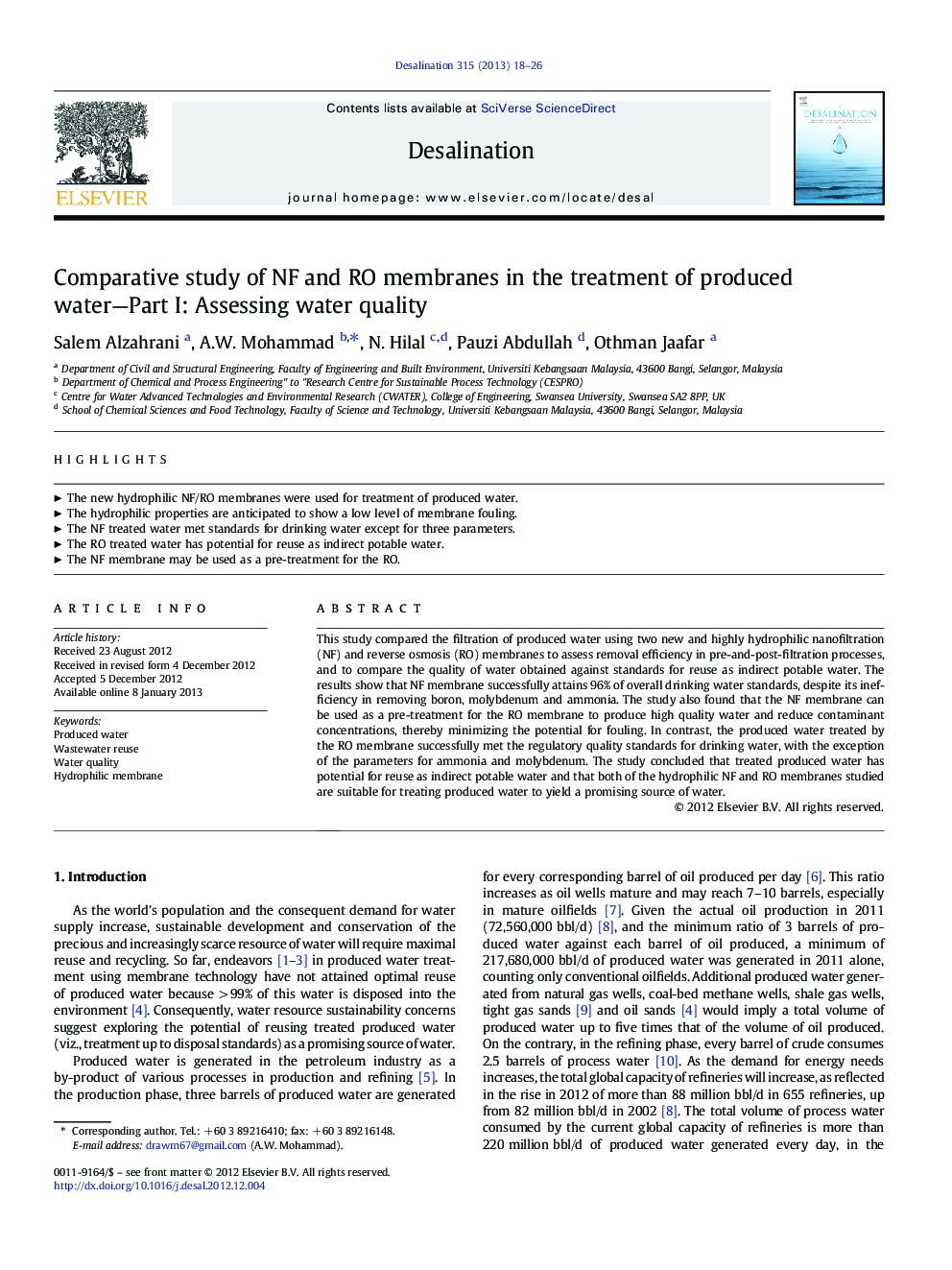| Article ID | Journal | Published Year | Pages | File Type |
|---|---|---|---|---|
| 623827 | Desalination | 2013 | 9 Pages |
This study compared the filtration of produced water using two new and highly hydrophilic nanofiltration (NF) and reverse osmosis (RO) membranes to assess removal efficiency in pre-and-post-filtration processes, and to compare the quality of water obtained against standards for reuse as indirect potable water. The results show that NF membrane successfully attains 96% of overall drinking water standards, despite its inefficiency in removing boron, molybdenum and ammonia. The study also found that the NF membrane can be used as a pre-treatment for the RO membrane to produce high quality water and reduce contaminant concentrations, thereby minimizing the potential for fouling. In contrast, the produced water treated by the RO membrane successfully met the regulatory quality standards for drinking water, with the exception of the parameters for ammonia and molybdenum. The study concluded that treated produced water has potential for reuse as indirect potable water and that both of the hydrophilic NF and RO membranes studied are suitable for treating produced water to yield a promising source of water.
► The new hydrophilic NF/RO membranes were used for treatment of produced water. ► The hydrophilic properties are anticipated to show a low level of membrane fouling. ► The NF treated water met standards for drinking water except for three parameters. ► The RO treated water has potential for reuse as indirect potable water. ► The NF membrane may be used as a pre-treatment for the RO.
